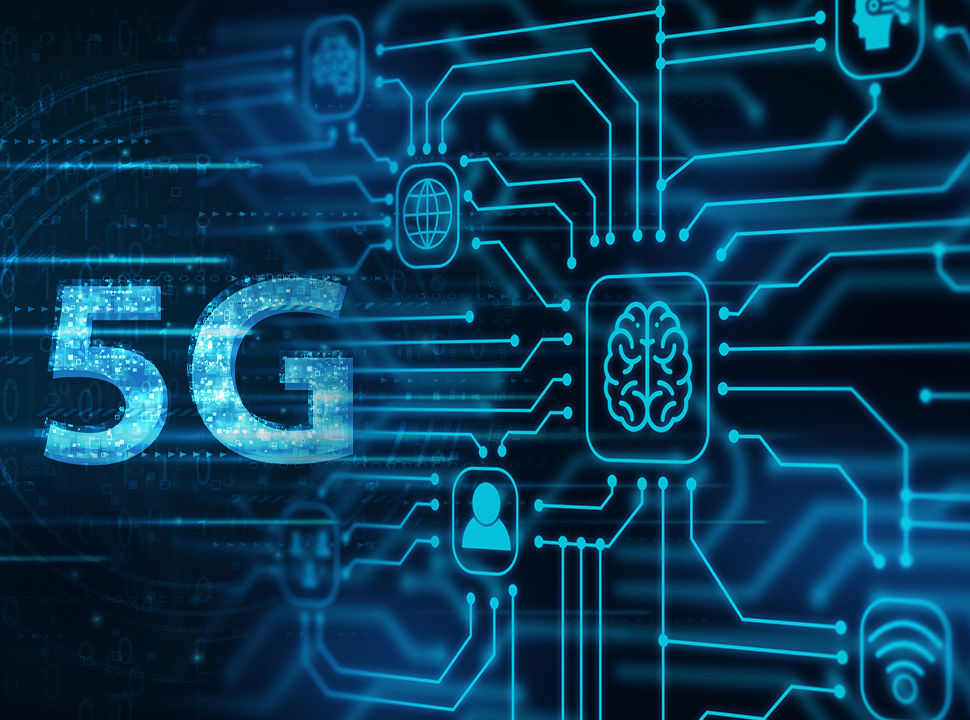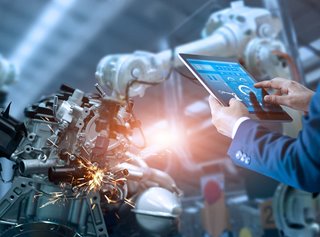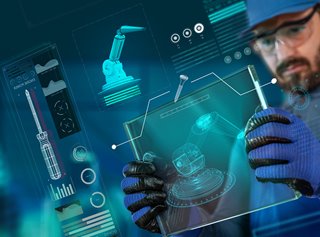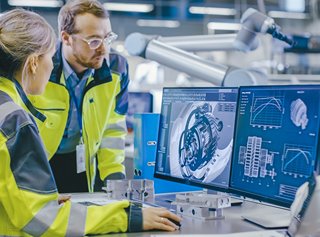6 Ways 5G Will Impact Mechanical Engineering
6 Ways 5G Will Impact Mechanical Engineering


The faster speeds and lower latency of 5G will significantly impact design, including virtual reality and rapid prototyping.
When the transition from 4G to 5G is complete, all industries and businesses will enjoy the faster and denser data streams that 5G brings. With speeds as high as 10 gigabits per second and latency (delay) less than five milliseconds, companies are looking forward to impressive gains in productivity and efficiency. In fact, speeds are claimed to be up to 100 times faster than 4G, accompanied by higher bandwidth and significantly increased connection density compared to today’s networks. The faster speed and lower latency of 5G will advance the capabilities of IT and Internet of Things (IoT) technologies. These include wireless connectivity, machine-to-machine communications, data capture and analysis, artificial intelligence, simulations, 3D modeling, and virtual and augmented reality—all of which impact engineering and design.
Below are six ways 5G will impact mechanical engineering:
Manufacturers are constantly looking for ways to boost efficiency and innovation by improving connections between people, equipment, and devices, especially through IoT technologies such as AI, machine learning, and robotics. “5G will help enable the concept of Industry 4.0, where factories will have much better flexibility using 5G, or even a 5G private network, to connect and operate on the factory floor,” said Fram Akiki, president of Joun Technologies, a technology consulting firm.
Because of 5G’s much faster speeds, virtual reality (VR) will be able to operate without a wired connection. In addition, the motion sickness that sometimes accompanies VR that is caused by the higher latency of 4G will be eliminated, allowing for the creation of more effective VR products. For example, the low latency of 5G will enable haptic applications like remote surgery that were previously impossible to accomplish due to the delay between a surgeon’s hand movement and the remote actuator response.
Recommended for You: Harnessing 5G’s Excess Energy Could End Battery Power
5G will enable the creation of many new applications or the integration of existing products that were not possible before. Engineers will be able to develop faster and smarter devices for a variety of industries. “The higher bandwidth and low latency will transform existing applications and will likely create new ones that have yet to be imagined,” said Shawn Carpenter, senior product manager at Ansys, a provider of engineering simulation and 3D design software.
5G will make digital twins more capable, providing faster data capture from IoT sensors and data analytics. Digital twins offer engineers virtual tools for managing assets and resources while improving performance. Not only will 5G enhance the effectiveness of digital twins in real-time, but 5G-enabled digital twins can also be used to assess the impact of 5G implementations.
Explore our Infographic: The Mobile Wave of 5G
Communication can be a challenge when half the team is in an office, and the other half is operating remotely off-site. IT and communication platforms can be clunky, inefficient, or slow in sharing files or other large data transfers. 5G optimizes data flow, file-sharing, and real-time communication, improving collaboration, engagement, and decision-making.
Speed of production and speed to market are critical objectives for manufacturing companies. Rapid prototyping is essential for achieving these goals. 5G can vastly speed up conventional subtractive machining methods or the additive manufacturing methods that are used to make production-ready prototypes. 5G can also help workers operate multiple stand-alone 3D printers simultaneously and control the prototyping process remotely.
Watch Our Video: CES 2022 Innovation Award Winners
More companies, government agencies, and academic institutions are establishing 5G research centers to speed this process up. For example, an innovative 5G “living lab” center called NineTwelve Convergence at Purdue University features state-of-the-art 5G networking and wireless connectivity. Companies can partner with Purdue University researchers to develop their 5G technologies. The center will be the first in the U.S. to provide full-suite development and testing capabilities, revolutionizing the speed at which products get to market while minimizing risk and reducing development costs. “Our 5G lab will be another key component in creating the nation’s first fully-integrated testbed at scale for innovators, companies, and key stakeholders,” said David Broecker, chief innovation and collaboration officer for Purdue Research Foundation.
Mark Crawford is technology writer based in Corrales, N.M.
Below are six ways 5G will impact mechanical engineering:
1. Smarter Operations
Manufacturers are constantly looking for ways to boost efficiency and innovation by improving connections between people, equipment, and devices, especially through IoT technologies such as AI, machine learning, and robotics. “5G will help enable the concept of Industry 4.0, where factories will have much better flexibility using 5G, or even a 5G private network, to connect and operate on the factory floor,” said Fram Akiki, president of Joun Technologies, a technology consulting firm.
2. Improved VR
Because of 5G’s much faster speeds, virtual reality (VR) will be able to operate without a wired connection. In addition, the motion sickness that sometimes accompanies VR that is caused by the higher latency of 4G will be eliminated, allowing for the creation of more effective VR products. For example, the low latency of 5G will enable haptic applications like remote surgery that were previously impossible to accomplish due to the delay between a surgeon’s hand movement and the remote actuator response.
Recommended for You: Harnessing 5G’s Excess Energy Could End Battery Power
3. Design Freedom
5G will enable the creation of many new applications or the integration of existing products that were not possible before. Engineers will be able to develop faster and smarter devices for a variety of industries. “The higher bandwidth and low latency will transform existing applications and will likely create new ones that have yet to be imagined,” said Shawn Carpenter, senior product manager at Ansys, a provider of engineering simulation and 3D design software.
4. Improved Digital Twins
5G will make digital twins more capable, providing faster data capture from IoT sensors and data analytics. Digital twins offer engineers virtual tools for managing assets and resources while improving performance. Not only will 5G enhance the effectiveness of digital twins in real-time, but 5G-enabled digital twins can also be used to assess the impact of 5G implementations.
Explore our Infographic: The Mobile Wave of 5G
5. Remote Teamwork
Communication can be a challenge when half the team is in an office, and the other half is operating remotely off-site. IT and communication platforms can be clunky, inefficient, or slow in sharing files or other large data transfers. 5G optimizes data flow, file-sharing, and real-time communication, improving collaboration, engagement, and decision-making.
6. Faster Prototyping
Speed of production and speed to market are critical objectives for manufacturing companies. Rapid prototyping is essential for achieving these goals. 5G can vastly speed up conventional subtractive machining methods or the additive manufacturing methods that are used to make production-ready prototypes. 5G can also help workers operate multiple stand-alone 3D printers simultaneously and control the prototyping process remotely.
Making It Happen
The transition to 5G will not be quick or easy. The full rollout could take up to 15 years because the new infrastructure required to support 5G is complex, expensive, and still being developed. Estimates vary, but most experts agree that telecom companies will need to spend $1 trillion to upgrade their existing 4G networks.Watch Our Video: CES 2022 Innovation Award Winners
More companies, government agencies, and academic institutions are establishing 5G research centers to speed this process up. For example, an innovative 5G “living lab” center called NineTwelve Convergence at Purdue University features state-of-the-art 5G networking and wireless connectivity. Companies can partner with Purdue University researchers to develop their 5G technologies. The center will be the first in the U.S. to provide full-suite development and testing capabilities, revolutionizing the speed at which products get to market while minimizing risk and reducing development costs. “Our 5G lab will be another key component in creating the nation’s first fully-integrated testbed at scale for innovators, companies, and key stakeholders,” said David Broecker, chief innovation and collaboration officer for Purdue Research Foundation.
Mark Crawford is technology writer based in Corrales, N.M.









.png?width=854&height=480&ext=.png)


